 |
 |
 |
 |
 |
 |
 |
 |
 |
 |
 |
Important issues
From the number of case studies and discussions with different end-users the need to suggest some issues of the sector in a more global approach arose.
Basically, the aim of these "issues" is to take some time to develop some important topics providing a more comprehensive context besides the presentation of a sum of "disconnected" case studies.
The underlying idea is to suggest that projects, to be assessed, have to refer to a background, to more comprehensive issues. Projects are hotspots, they illustrate peculiar, punctual problems that have to refer to upper levels policies or decisions, they are more strategic and maybe more conceptual. These links between cases and issues are explicit: one could find related cases studies references on the detailed description of issue.
Due to its nature, the "land use and building" sector includes a broad range of themes and thematic layovers with different disciplines and scales. An outline of the issues developed is addressed here below.
Integrated land use planning and strategies
Integrated planning at different levels - urban and regional - needs to consider different functions.
These interactions are of physical, economical and social nature. It is not only to add these functions to each other, but to enlace and integrate them, so that they can be reasonably linked and implemented.
This approach encourages also developing scenarios, to consider different ways of how to link these functions and evaluate their relation and interdependence from different angles.
Integrated approaches display intended changes in a participatory environment.
Problems are:
Lack of coordination and co-operation - because of the complexity and the interrelations between functions in the urban context, a better involvement of different levels of policy, politicians and administration and the people would be needed. There is a growing need for dynamic co-operation between these stakeholder groups to tune the defined problems, the policy making, planning, consensus building, decision-making and implementation.
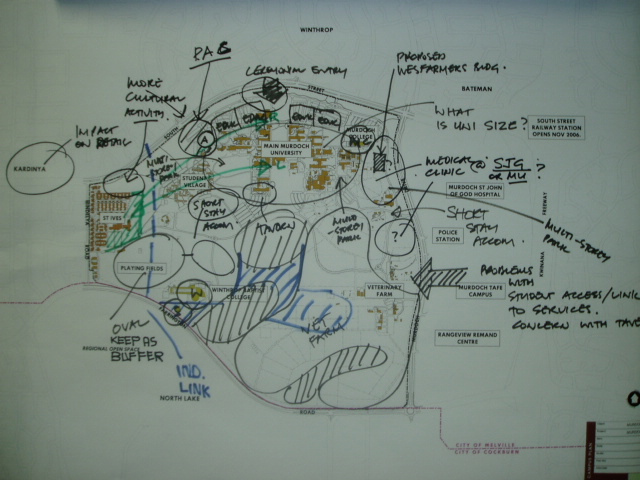
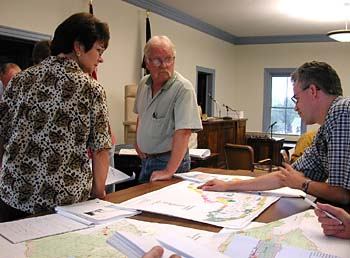
Urban sprawl – open space development
Urban areas have no longer strict borders but interlink with suburban areas. Urban spread has created an intensive exchange of people and goods and the emergence of new dwellings between the city and its hinterland. This "area in between" is facing a tremendous development in many respects; however it seems that economic development dominates environmental and social issues at present. When talking about sustainable development or local agenda initiatives, the question comes up – what about sustainable development in this "in between areas"?
Problems are:
Impact on land resources - the impact on natural and land resources increases generating a number of problems. The protection of natural resources relates primarily to the extensive consumption of open space which often takes place somehow "uncontrolled" at the urban fringe. Here new areas for housing or business locations develop rapidly, requiring infrastructure investments. As a result, market-oriented developments dominate the local areas and consequently infrastructure investments and traffic increases.

Rehabilitation of a derelict urban areas and urban districts
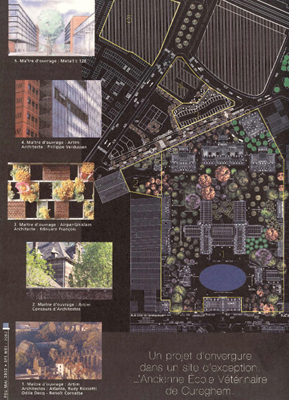
The Rehablititation of derelict urban areas often are part of urban revitalization programs. They provide a high potential to add value to an urban district. Therefore, endeavours to reuse and integrate these areas may form an important part of urban renewal projects whose driving force is not only environmental but also social and economical founded.
Mainly, 2 kinds of developments could be distinguished concerning "the rehabilitation of an urban district".
• The "(Re)development" of the district. This operation is lead by huge new construction investments (buildings and equipments). Technologies play an important role and the functioning of the whole district is deeply reorganised.
• The renovation of the district. This operation is more modest. Constructions projects are softer. Social preoccupations and (or) public involvement and (or) protection of the environment, etc. are part of the revitalisation process.
In the first cases, often public or private "investors" have located the site as being strategic. Usually, a proposal comes prior any development plan or scheme for the district. Tools are then needed to frame the initiative. This kind of development is often seen as an opportunity for the city development. The main problem is to define the conditions of sustainable development under this pressure. Authorities in European cities are facing currently this kind of decision-making problems related to districts' redevelopments.
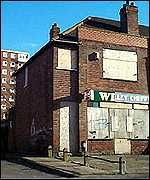
The second type of revitalisation is developed all through Europe and are very familiar and practical problems of the renewal of cities. This approach, trying to take social and cultural background into account and promoting inhabitants participation emerged in the 70ies.
Particularly, local authorities are facing decision-making problems concerning these district revitalisations. The promotion of sustainability is not easy to put in practice. They have to deal with many different parameters and points of view developed in different approaches.
Emission reduction for the building sector
Building cooling is an increasing demand in developed and developing countries, increasing electricity and power plant top capacities.
Problems are:
The building sector accounts for 30 to 50% of the CO2 emission. In Europe the CO2 emission of buildings is 23% for heating, 36% when electricity use is included and 4% for the building process. In the total worldwide CO2 emission, only the buildings have a part of 40%.
There is a new directive on reducing buildings carbon emissions: COM 2002/91/EC from 16. December 2002 which has to be implemented by 4th January 2006
(http://www.managenergy.net/products/R210.htm)
The cement production energy and chemical process for example causes for at least 5% of the worldwide CO2 emission. Besides construction of buildings this cement is also used for infrastructures such as roads and bridges.
Building heating and cooling requests low temperature energy. This is a low value energy which can be easily produced with renewable energy sources such as solar energy. But there are also other ways of reducing emissions: Better insulation, regeneration of heat, biodegradable fuels, …..
Other sectors use mainly high value energy such as kinetic or electric energy. This needs much more expensive renewable energy processes.
The conflict promotion of an energy efficient building and a healthy indoor climate
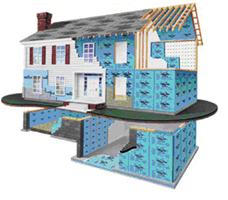
Environment health promotion (energy saving prevents the greenhouse effect) as opposed to population health promotion (ventilation limitation reduces indoor air quality) is a controversial issue.
Conflicts exist between making a building airtight and reducing ventilation to be more energy efficient, which reduces the indoor air quality and results in health problems such as asthma.
Fossil energy use causes CO2 emission. This CO2 reduces the earth infrared radiation, changing the earth temperature balance, and causes the today temperature rise or greenhouse effect. Where sustainable solar energy is applied, there is no emission, and a healthy indoor climate can be the criterion for energy consumption.
Problems are:
The energy saving of present newly built buildings is responsible for increasing asthma, especially among young people, due to strongly reduced fresh air ventilation. Ventilation reduction and moisture inconvenience cause Chronic Non Specific Lung Disease (CNSLD) such as asthma, chronically bronchitis, and pulmonary emphysema. Lung diseases among children have increased significantly. Healthy indoor climates can be used for free-standing, connected or high-rise home and utility buildings in all climate zones.
Construction Processes and waste streams
The problem is:
The today share of material transport in the building costs is 25%. Buildings manufactured industrially and sectionally will cut building waste, at present the largest contributor to waste streams.
Prefabricated buildings could not only save accidents costs but also material and transport costs and could be invested in a sustainable indoor climate.
Material reduction could decrease the today 25% transport share in building costs to a 6 to 10% share such as in industry. Industrial, flexible and detachable constructing improves the efficiency and labour conditions, delivers a higher and constant quality, reduces the raw material demand and waste production and makes adaptations to changing requirements and wishes simple and payable. Prefabrication with small complex components instead of large heavy elements improves the reuse. Disassembling on system or component level avoids energy losses and unnecessary waste.
Construction process and its human impacts
The impacts of construction processes not only affect waste streams but also human beings.
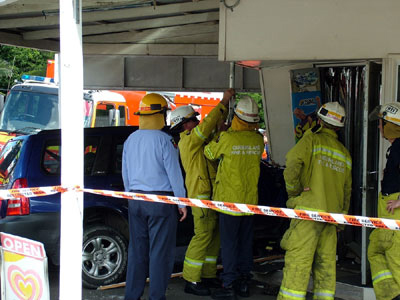
Problems are:
The building sector has the highest number of fatal accidents, disabled workers and absentees.
By moving the building construction from the building site to the workshop, safety and working conditions will improve drastically. Prefabricated buildings can also help to save accidents costs.
Assessment and labelling of a building in operation
Here are concerned "collective buildings" in operation.
For these collective buildings, a more sustainable way of functioning is needed. Experiences are regularly initiated. The difficulty is to assess supposed more sustainable functioning, to communicate progresses done and promote sustainability.
The impact of building in operation is part of the environmental but also economic and social sustainable challenge. This preoccupation is encountered in many European countries and local authorities are aware of the sustainability policy they could impulse supporting these kinds of initiatives.
An important parameter is the skill of the assessment, its rapidity and efficiency. Subsequently, the definition of a label, considered as an efficient mean of promotion, asks methodological questions.
The European Union is aware of it and developed eco-management procedures (as EMAS, ISO 14001, etc) but these standards are often considered too complex, time and money consuming to be applied in practice.
For more the detailed issues information, click on:
• "The conflictual promotion of an energy efficient building and a health indoor climate"
• "Emission reduction for the building sector"
• "Construction process and its human impact"
• "Rehabilitation of derelict urban areas and district"
• "Assessment and labelling of a building in operation"
• "Sustainable balance between economic growth and a social and environmental sound development (planning sector)"
• "Public participation in planning approaches"